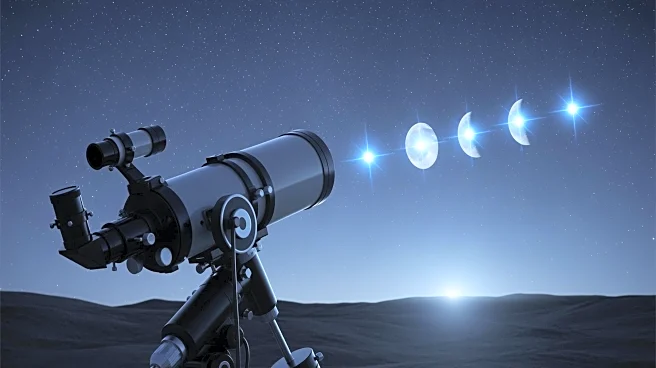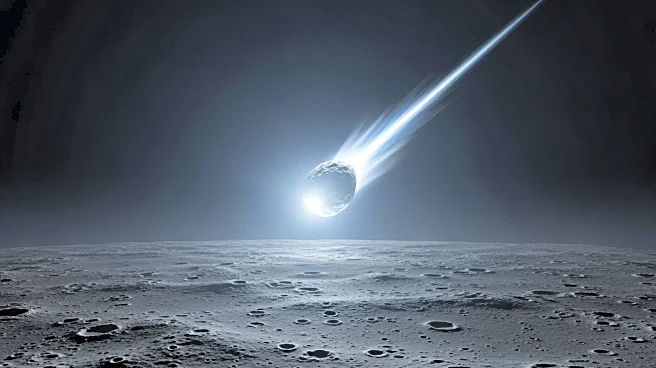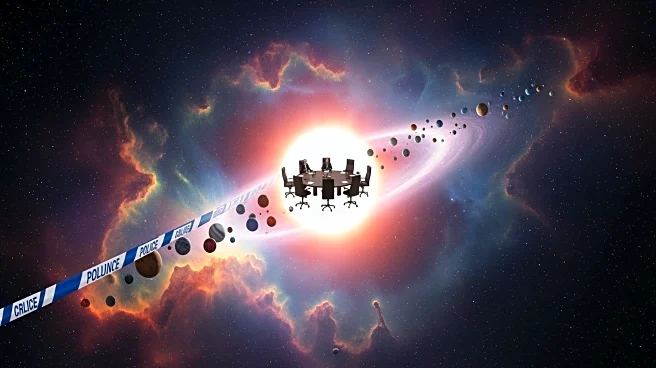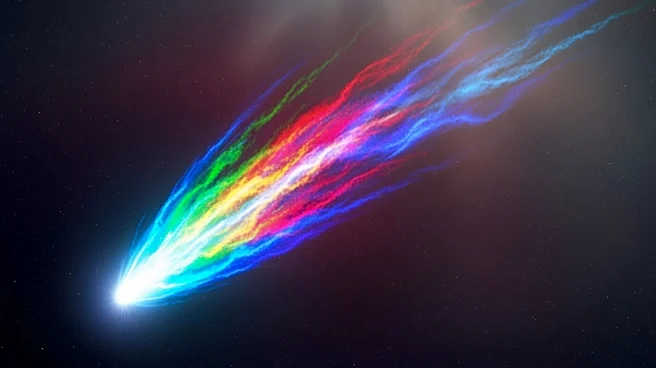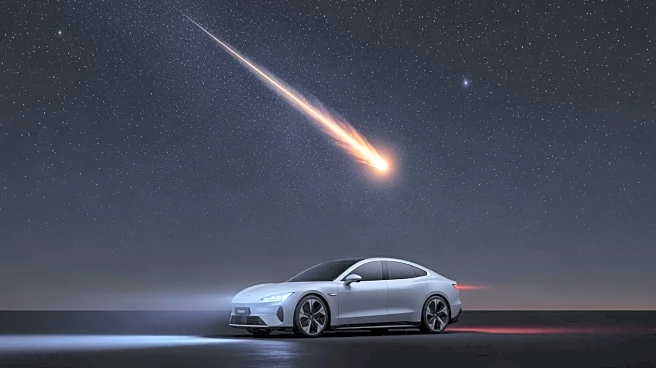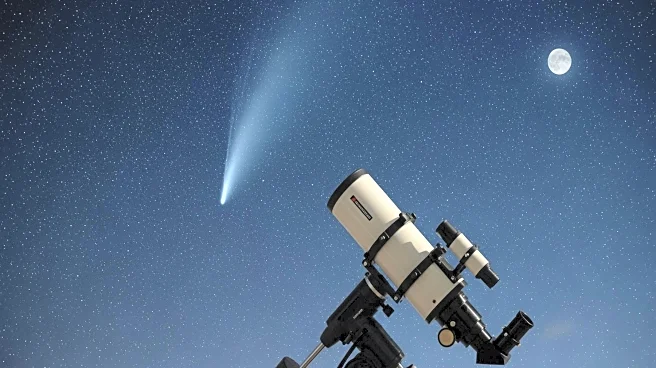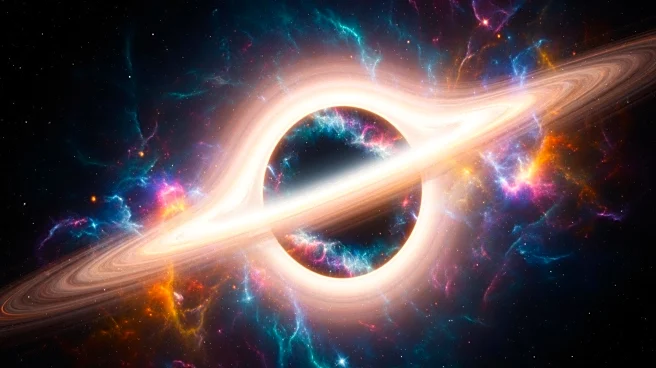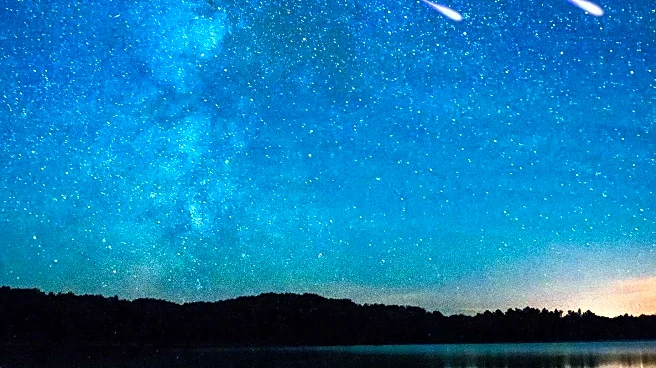What's Happening?
Japanese astronomer Daichi Fujii has captured video footage of two meteors striking the moon, resulting in bright flashes visible from Earth. These events were recorded using cameras at the Hiratsuka City
Museum and later shared on social media. The impacts occurred during the Taurid meteor activity window, suggesting a possible connection, although this has not been confirmed. The first impact was observed on October 30 near the east side of Gassendi Crater, with the meteor traveling at 27 km per second and weighing approximately 0.2 kilograms. The second impact was detected on November 1 west of Oceanus Procellarum, one of the moon's largest dark plains. Fujii has been documenting lunar flashes since 2011, using a 20cm telescope to track these brief events.
Why It's Important?
The observation of meteor impacts on the moon provides valuable insights into the frequency and intensity of such events, which differ significantly from those on Earth due to the moon's lack of atmosphere. These impacts can occur at speeds up to 160,000 miles per hour, creating sudden bursts of light and heat and forming craters. Understanding these phenomena is crucial for lunar exploration and potential future missions, as it helps assess the risks posed by space debris. Additionally, these observations contribute to the broader study of meteor showers and their effects on celestial bodies, enhancing scientific knowledge of space dynamics.
What's Next?
Further analysis of the captured footage and data may help establish a definitive link between the observed lunar impacts and the Taurid meteor showers. Continued monitoring of the moon for similar events will provide more data to understand the frequency and characteristics of meteor impacts. This ongoing research could inform future lunar missions, particularly in terms of safety and planning for human or robotic exploration. Additionally, advancements in observation technology may improve the accuracy and detail of such recordings, offering deeper insights into lunar surface interactions.
Beyond the Headlines
The study of lunar impacts also raises questions about the long-term effects on the moon's surface and potential implications for future colonization or resource extraction. The ability to predict and mitigate the impact of space debris is essential for the sustainability of lunar activities. Moreover, these observations highlight the importance of international collaboration in space research, as data sharing and joint efforts can enhance the understanding of cosmic events and their implications for Earth and its satellite.



